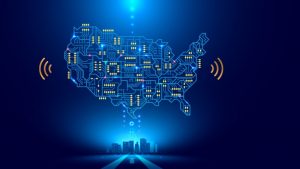With K-12 educational institutions increasingly targeted by ransomware and other cyber attacks during the coronavirus pandemic, the Government Accountability Office (GAO) is pushing the Department of Education to update its plans – which currently date from 2010 – for addressing cyber risks faced by schools.
Code for America has launched a new initiative to work with state and local governments (SLGs) to rebuild America’s safety net so that “government services are equitable, easy-to-use, and built for the digital age.”
The National Science Teaching Association (NSTA) has launched a new line of professional development courses – Professional Learning Units (PLUs) – to help K-12 educators enhance their teaching practice.
Google is offering community colleges and technical education high schools around the U.S. free access to its technology certifications.
Guidance published by the Association of Governing Boards of Universities and Colleges (AGB) advises that higher education governing boards should stay appraised of rising cybersecurity threats, and fund efforts to address them.
The City of Oakland, Calif., is now partnering with EducationSuperHighway on a new initiative to connect 90 percent of Oakland’s estimated 36,951 unconnected homes to high-speed broadband over the next five years.
In a bid to improve the user experience, reduce risks, and cut data processing time, the Los Angeles County Office of the Assessor announced that it has migrated its Assessor operations from a paper-based, legacy mainframe environment to the cloud.
Washington School Information Processing Cooperative (WSIPC), a non-profit public agency located in the state of Washington, has selected a new unified technology platform that will help educators – from the district office to the classroom – engage every family with school communications and communications-based services.
The Federal Communications Commission announced today that it will commit more than $421 million in the latest round of funding for the Emergency Connectivity Fund (ECF), bringing total program commitments to over $3.05 billion and 10 million students connected.
After more than two months of angling and dealmaking, the House of Representatives voted to approve the $1 trillion Infrastructure Investment and Jobs Act – also known as the Bipartisan Infrastructure Framework – on November 5, sending the bill along with its $2 billion in cyber funding and $65 billion in broadband appropriations to President Biden’s desk for final approval.













